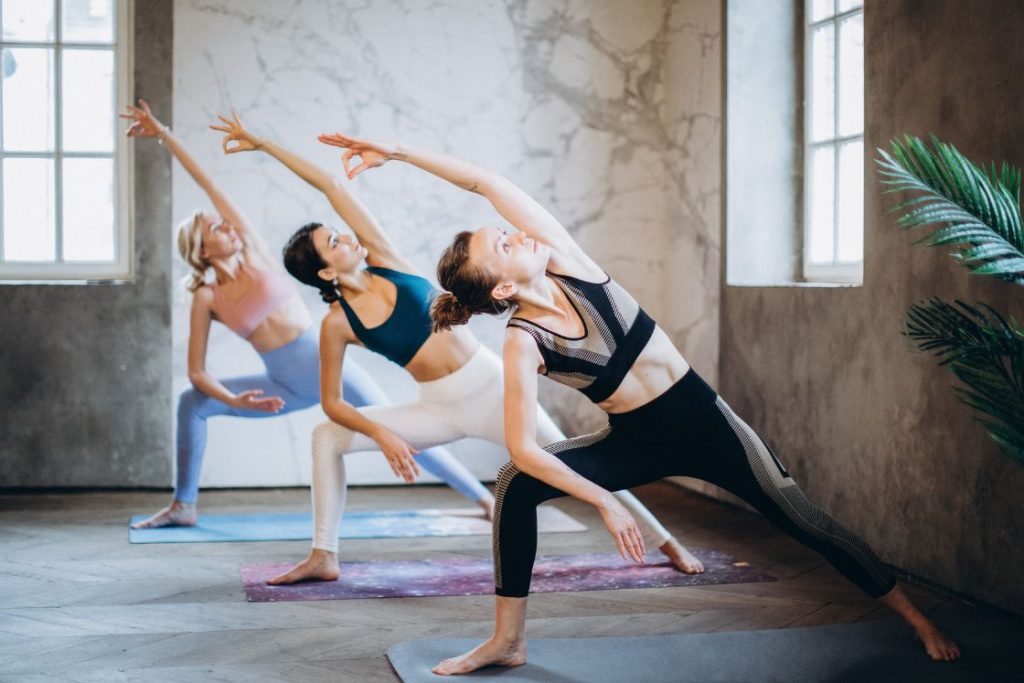
Yoga is a practice that includes a variety of disciplines, such as asanas (postures), pranayama (breath control), meditation, and even one’s behavior.
Regardless of flexibility, body shape or prior fitness level, anyone can benefit from yoga.
If you choose the right style of yoga and practice it regularly, it can help you achieve the health goals you desire.
However, the difficult question of “how much yoga should I do to see results?” is more obvious when you’ve just started yoga.
And the answer to that question is much more undefined. You can’t limit your yoga practice to 3 times a week for 1 hour.
The first thing you should understand is that every body is unique and different and requires different approaches.
With yoga, the focus is on the journey, not the destination. To maximize the benefits of your yoga practice, you just need to know how much time you should spend on it.
How much yoga you need usually depends on the following factors:
- Your current fitness level – flexibility, mobility, strength, etc.
- How often do you workout – be it going to the gym or practising yoga
- Your fitness and health goals
- Your spiritual goals (if any)
Based on the above, you can calculate how often you need to drive to your yoga studio or roll out your mat at home.
In this article, we will help you figure out these important points to build a healthy yoga routine.
How Frequently You Should Do Yoga?
The easiest way answer to this question is: start each day with at least 10-15 minutes of yoga. This can be Pranayama such as Anulom-Vilom or Kapalbhati, meditation such as Body Scan, mindfulness or mantra meditation, or practicing the mountain, tabletop or staff pose.
Ideally, before you get on the mat, ask yourself the question: What is my goal for practicing yoga?
Once you are clear about your goals and the purpose of your practice, the dilemma of practice frequency will resolve itself. It is usually helpful to practice regularly – 3 to 5 times a week – for 4to 6 weeks. It is said that within this period of time you can see the results of your practice, provided you are consistent.
Another factor to consider when deciding on frequency is the combination of practice sessions.
Many people like to do yoga while exercising in the gym to get the best of both worlds. This combo can be helpful as a gym workout builds muscle strength and muscle mass whereas yoga can enhance flexibility and help to recuperate.
Another set of the population might feel that they are not cut out for heavy lifting and gym workouts and focus completely on yoga.
In such scenarios, you may follow the below frequency of practice:
- If yoga is your only workout – Do at least 20-30 minutes of yoga each day, 6 days per week. Beginners can start with 3 days per week for the first month and increase that to 40-70 minutes per day.
- If yoga is combined with other exercise methods- Do at least 2-3 yoga sessions per week for a minimum of 10-15 minutes per day.
How Often You Should Do Yoga?
Let us now address the main issue – how often should you do yoga?
And the answer is not as straightforward as you might think.
Just as the frequency of doing yoga depends on whether you are practicing it stand-alone or with some other workouts, the time duration also depends on your goals and the style of yoga you want to practice.
The time you spend will be determined basis your goals, it can be to lose weight, build muscles, improve strength, enhance flexibility or just achieve a good night’s sleep.
Also, the type of yoga you practice – Hatha, Vinyasa, Restorative or Power – is one of the key factors in a timely routine.
Especially for beginners, you should initially aim for building consistency of practice. This will come only when you spend at least 10-15 minutes every day doing just basic yoga practice. It can be pranayama, mindfulness meditation, or basic hatha yoga asanas. Once you have built a habit of imbibing yoga in your routine, you can switch to different styles and select other goals to achieve.
Let us see the time periods for each goal and yoga asana form individually.
Also Read: How Long Should You Hold A Yoga Pose For The Best Results
Based on Goal: Achieving Your Yoga Objectives
For Flexibility
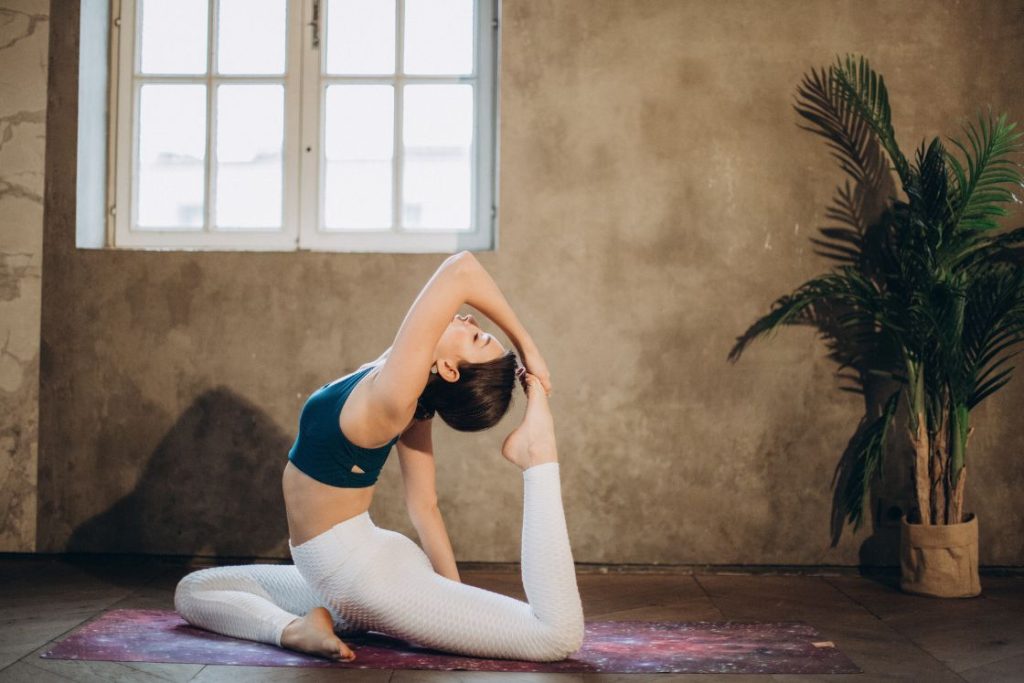
Gaining flexibility is often the first goal of many yoga practitioners. Eliminating stiffness and improving the range of motion of muscles and limbs will result in your ability to perform a variety of asanas with ease. This also helps relieve accumulated stress and tension in the hip area that can cause poor posture, instability, lower back pain and an unsteady gait.
- Practice yoga 3-5 times per week for 60-90 minutes.
- Focus on slow-paced yoga forms that emphasize holding poses for extended periods, such as Hatha, Restorative, Iyengar, or Yin yoga.
- These styles help strengthen muscles and improve flexibility while reducing the risk of hypermobility and joint instability.
- Allow your body to rest for a day or two to recover from the demands of your practice.
For Balance
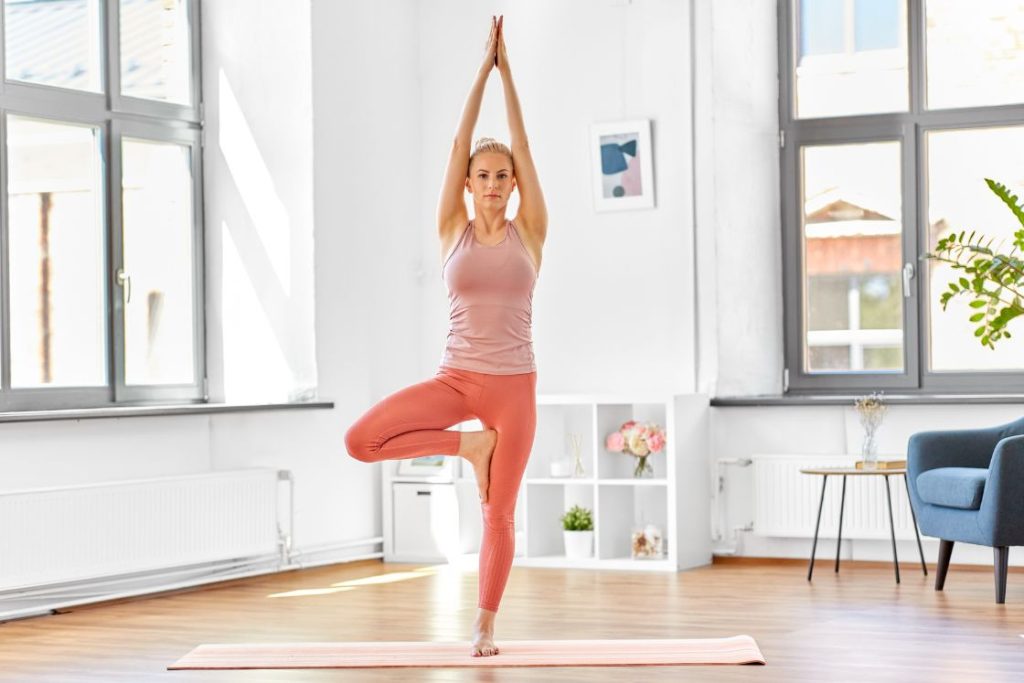
Balance is something you need to work on daily. It is not easy to do poses like the tree pose, the eagle pose, or the headstand. Sometimes it takes months before you have the confidence and strength to practice such poses.
- Consistently practice yoga for 60-90 minutes per day.
- Concentrate on poses that target your core, arm, and leg muscles to build strength and improve balance.
For Weight Loss

In addition to flexibility, weight loss is another important goal. Instead of going to the gym, they want to practice a much more natural method of weight loss. The results may not show up as quickly as working out at the gym because the calories are not burned as quickly, but the yoga practice provides a toned body and also improves overall physical health.
- Engage in fast, vigorous, and sweaty forms of yoga, such as Ashtanga, Vinyasa, Hot, or Power Yoga.
- Practice for at least 1 hour, 3-6 times a week.
- Yoga can contribute to weight loss by toning the body and improving overall physical health.
- Remember to give your body rest days to prevent burnout when practicing these rigorous styles.
For Calm Mind

Yoga practice as a whole is mostly done for achieving a clutter-free mind. Practicing meditation or mind cooling pranayama such as anulom-vilom help in destressing and alleviating mild symptoms of depression and anxiety.
Yoga practice done for even one minute a day will give encourage breath awareness and mindfulness. This results in us becoming calmer, happy, or peaceful and gives us the time to focus on ourselves.
to achieve this state, you should perform mind-calming yoga practices as often as you can. if you want to build a habit, start with 10-15 minutes daily either in the early morning or in the evening.
For Quality Sleep
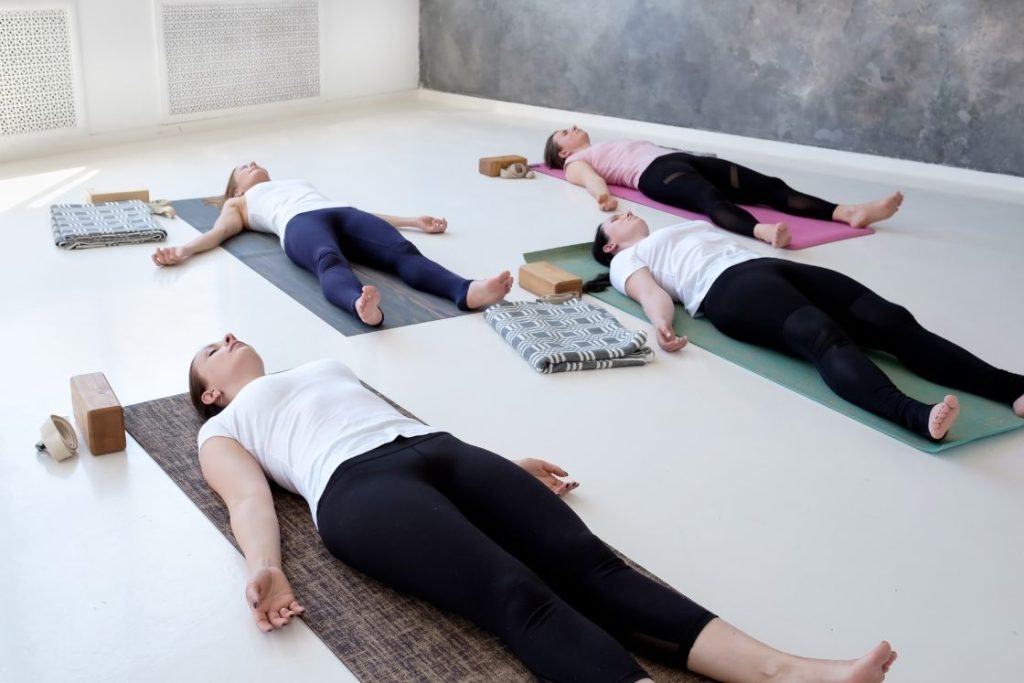
This goes without saying that a calm mind is a prerequisite for good sleep.
Simple breathing exercises and yoga poses can typically calm you down right away. However, long-term results will be much greater with continuous, regular practice. Your ability to focus, feel, and have energy will all feel more under your grasp.
So, a daily 10-minute practice before going to bed is sufficient. You will gradually build your practice as you start its positive effects.
For Building Muscles
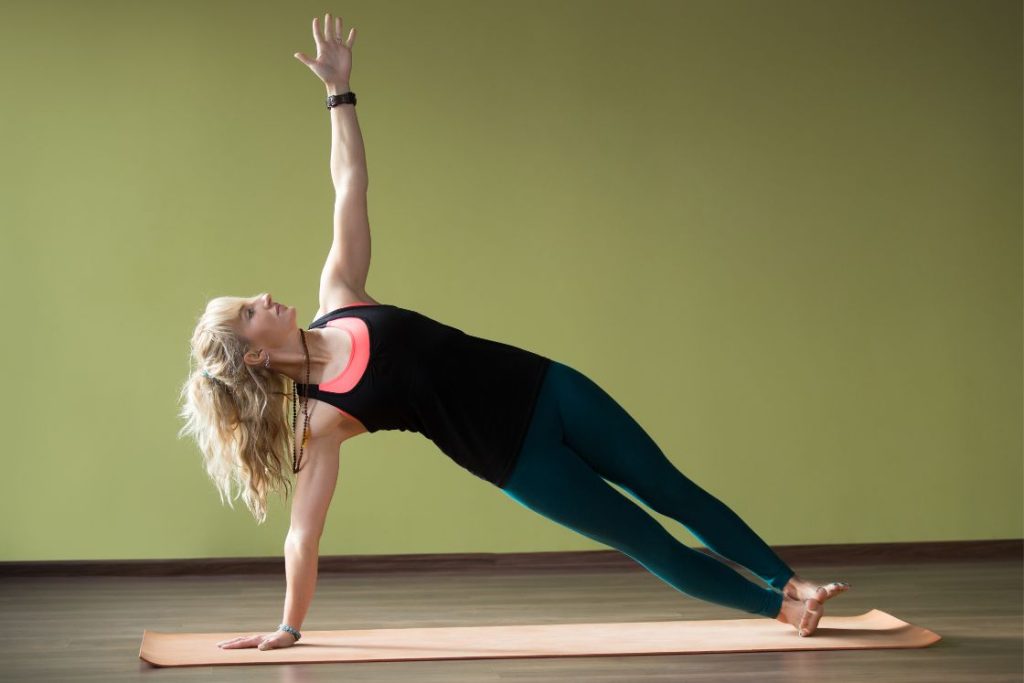
When aiming for muscle building through yoga, focus on poses that engage multiple muscle groups simultaneously. Poses like Warrior II and Plank can help you achieve your goal of increasing muscle strength and definition
For Strength
To build muscle strength and overall physical strength, you can practice yoga 3 times a week. Strength building comes automatically with improving flexibility and balance.
For Chronic Pain
Practice a steady-paced or healing yoga practice such as restorative, Hatha, or yin yoga 1-3 times a week for 30-60 minutes.
Based on Types of Yoga: Tailoring Your Practice
Fast, Rigorous, and Sweaty Yoga Styles (Ashtanga Yoga, Vinyasa, Power Yoga, Hot Yoga):
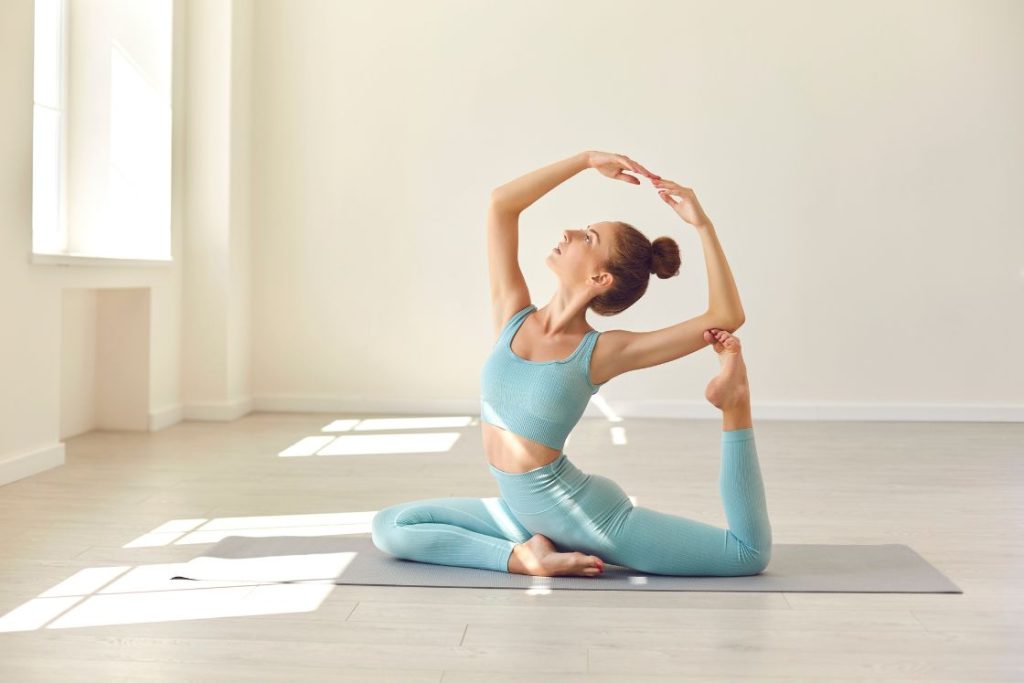
- Practice 3-5 times per week.
- These styles involve intense muscle and joint movements.
- Allow your body to rest with 1-2 days off per week.
- Overexertion in these styles when your muscles are exhausted can lead to injury or strain.
Since they involve extreme muscle and joint movements, your body needs time to rest and recover, so a break of 1-2 days is essential. Overworking your body when your muscles are exhausted can lead to injury or strain, which would defeat the purpose of the yoga practice.
Slow, Long-Held, Therapeutic Yoga Styles (Hatha Yoga, Restorative Yoga, Iyengar Yoga, Yin Yoga):
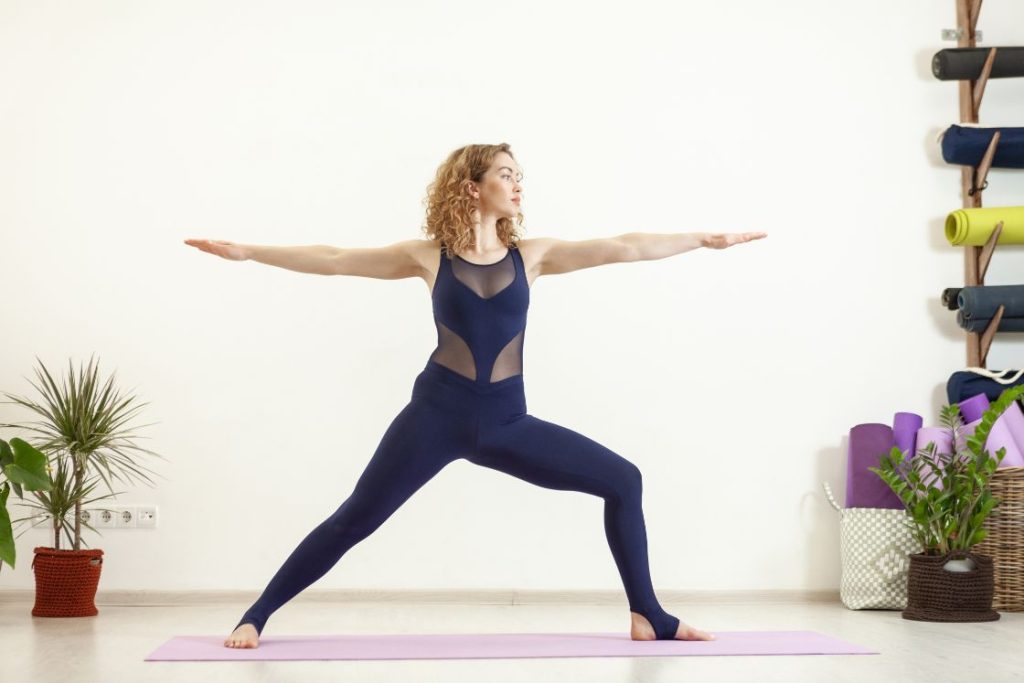
- Practice 5-6 times a week.
- These styles emphasize slow movements and holding poses for extended periods.
- They provide a gentle stretch to muscles and joints.
- Regular practice of these styles can have calming and healing effects, both physically and mentally.
Your body is not under pressure to perform intense movements, and these forms stretch the muscles and joints from the ground up. Even if you practice these forms daily, you will feel their calming and healing effects both physically and mentally.
How Much Yoga Is Excessive?
Yoga can never be too much. You can practice it at any time of day and at any number of times. It all depends on your needs, routine, schedule and lifestyle.
However, if you do not practice carefully, there is a very good chance that you will injure or overuse a muscle or joint. This often happens when you have not followed the correct guidelines and instructions for performing a pose or pranayama technique.
You should listen to your body’s needs and limitations. Understand when you need an intense session and when your body needs time off.
You should also not be influenced by the schedules of other yoga practitioners and practice a program that is not tailored to your body’s needs. This will lead to further lack of energy, added stress and sore muscles – and it is you who will suffer the consequences.
So if you feel that exercising 1-2 times a week for 1 hour is enough, then stay true to that routine. And if you are physically and mentally able to keep up the yoga practice for several hours a day – good for you.
You always have the option to increase or decrease the time and duration of your practice depending on your needs.
In order to develop a regular practice that meets your specific goals, an appropriate yoga schedule must be created. Obviously, a yoga practice to lose weight or strengthen muscles requires a very different strategy than a yoga practice to relax after a stressful day or recover from an injury.
Remember, however, that yoga is a long-term practice and tends to lead to slow and gradual improvements.
You’ll get closer to your goal faster if you practice every day of the week, not just on the weekends.





Thank you for providing a detailed knowledge.